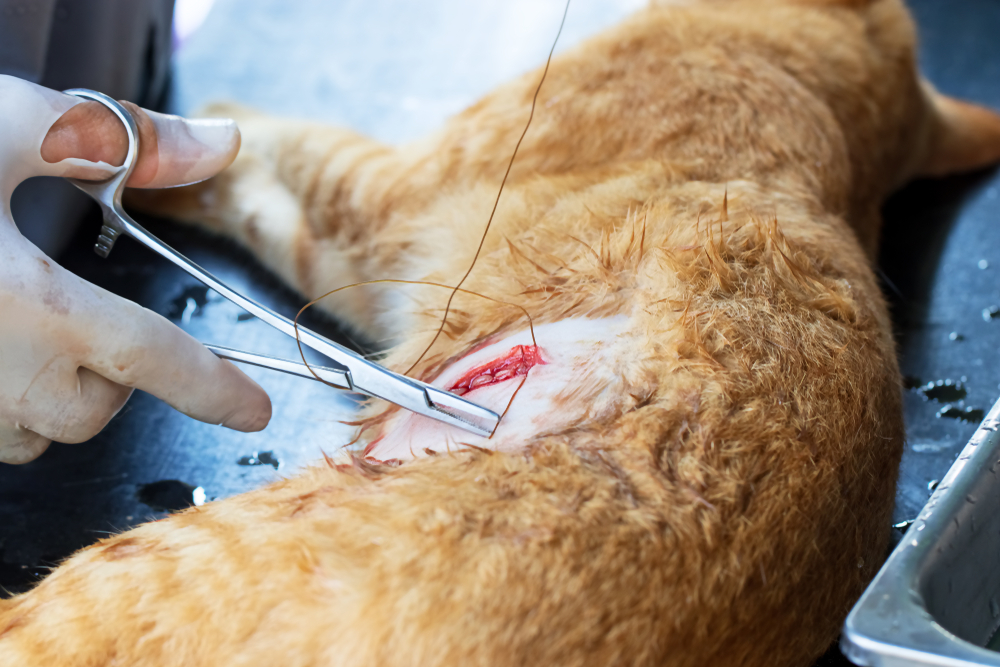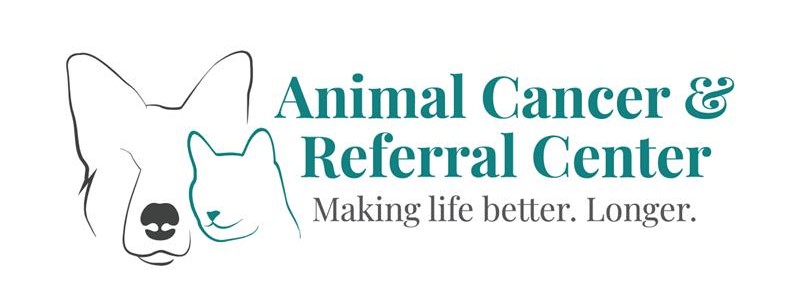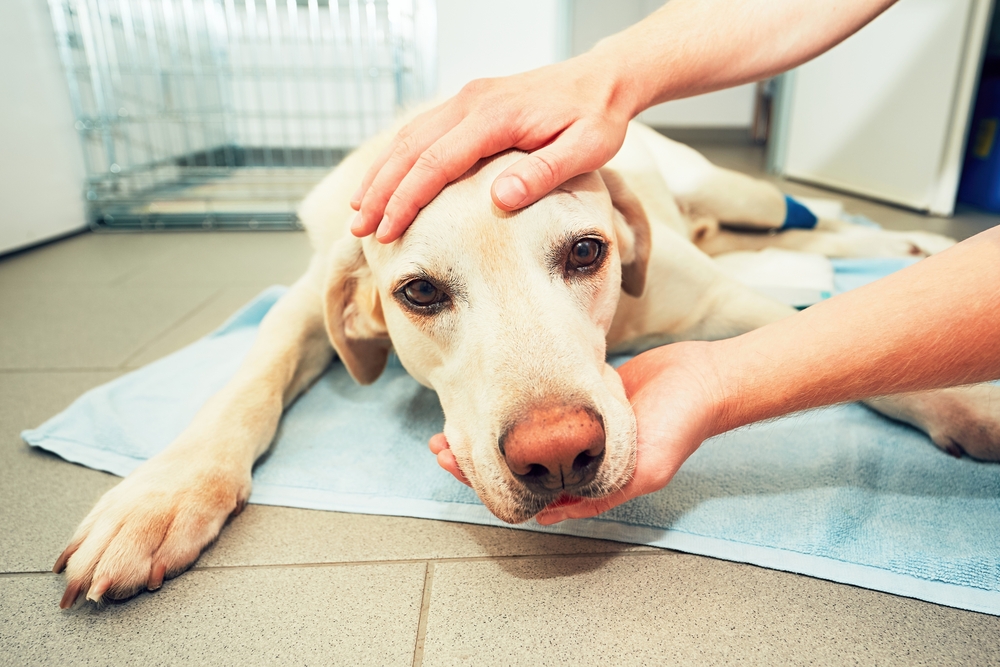Cancer is a scary concept, whether a two- or four-legged family member is affected. When a furry loved one is diagnosed with cancer, many pet owners try to relate the potential treatment to their knowledge of human cancer treatments. But, comparing veterinary chemotherapy to human chemotherapy has resulted in many myths that still remain today, despite incredible oncology advancements. To dispel these falsehoods, we’re tackling five frequently encountered veterinary chemotherapy myths.
Myth #1: My pet will lose all their fur while undergoing chemotherapy
Truth: While certain dog breeds, and some cats, experience fur loss during chemotherapy, it is relatively uncommon. Non-shedding dog breeds like poodles are more prone to losing their fur, but their hair will usually regrow after chemotherapy has ended. However, pets receiving chemotherapy can lose their guard hairs and whiskers, their skin and fur may change color, and fur regrowth after shaving for an intravenous (IV) catheter can be slow.
Myth #2: Chemotherapy drugs will create horrible side effects in my pet
Truth: When owners are presented with their pet’s chemotherapy treatment plan, they often fear horrible, debilitating side effects, like those seen in people. However, veterinary chemotherapy differs greatly from human chemotherapy. Because pet chemotherapy doses are significantly lower than human doses, and generally more spread out, veterinary chemotherapy typically causes few, or only mild, side effects. Chemotherapy targets rapidly dividing cells, such as cancer cells, and can also affect the rapidly dividing cells in the gastrointestinal tract and bone marrow, yet the overall toxicity rate is low in veterinary chemotherapy patients, with approximately 80% having no side effects, and only 15% to 20% experiencing mild to moderate side effects that last a few days. Side effects are less common in cats than dogs.
Serious complications, such as severe inappetence, dehydration, vomiting, and diarrhea, occur in less than 5% of veterinary chemotherapy patients. With a dose reduction and prophylactic medications, most of these patients can successfully receive that same drug again.
Myth #3: Chemotherapy is only administered intravenously
Truth: During your pet’s chemotherapy treatment, we will schedule routine follow-up appointments to check their health and treatment response, which may include blood work, X-rays, ultrasound, and additional diagnostic testing. While your furry pal will need to visit Pearland Animal Cancer and Referral Center for medical progress appointments, you may not need to visit for your pet’s chemotherapy treatment. Chemotherapy is commonly administered intravenously, but alternatives, such as subcutaneous, intramuscular, or oral options, are also available. If your pet’s chemotherapy treatment comes in an oral form, you can administer the treatment at home, with regular follow-up visits to monitor progress. However, you must carefully follow all instructions, such as administration frequency, administration with or without food, and whether other medications are contraindicated with the chemotherapy agent. In addition, you must never open or crush the chemotherapy pills or tablets, always wear Latex gloves when handling the pills, and always wash your hands thoroughly after handling any chemotherapy agent.
Myth #4: Chemotherapy for my pet is too expensive
Truth: While it’s true that cancer treatment and other advanced veterinary care can be expensive, chemotherapy, and other treatment options, can be reasonable. Our team is dedicated to finding financially acceptable treatment options for your family, and we will carefully outline the costs of diagnosis, treatment, and ongoing follow-up care, to help you choose a financially feasible option. Additionally, clinical research trials and angel funds may help offset the costs for qualifying patients.
Myth #5: Chemotherapy is the only cancer treatment available for pets

Truth: Although your mind may go straight to chemotherapy as the only cancer-treatment option for your pet, numerous other treatment methods are available. After your pet’s diagnosis, Dr. Parsons-Doherty will create a treatment plan designed to grant a good quality of life as long as possible for your cherished companion. Often, this plan will incorporate multiple modalities; for example, a tumor may be surgically excised, followed by chemotherapy or radiation therapy, to destroy any lingering cancer cells. Many factors determine your pet’s treatment protocol, and chemotherapy alone may not grant the best possible prognosis. New cancer treatments are available, with many more on the horizon, and a combination of these new treatments may be an excellent option for your pet.
When you have questions regarding your beloved companion’s chemotherapy, or other cancer-treatment options, avoid listening to myths and misconceptions. Instead, turn to your trusted Pearland Animal Cancer and Referral Center team for advice and support. We’re always here for you and your furry loved one—call us.


